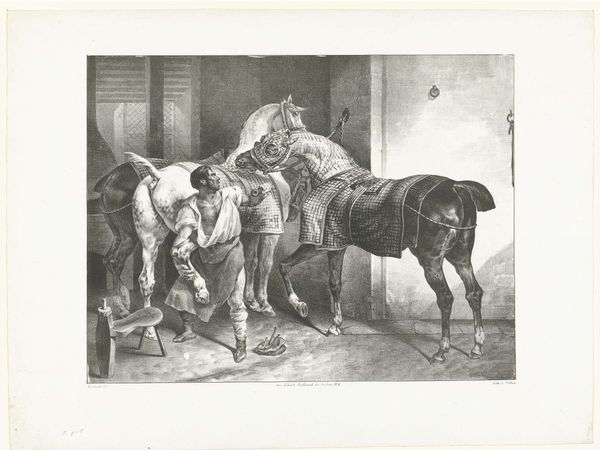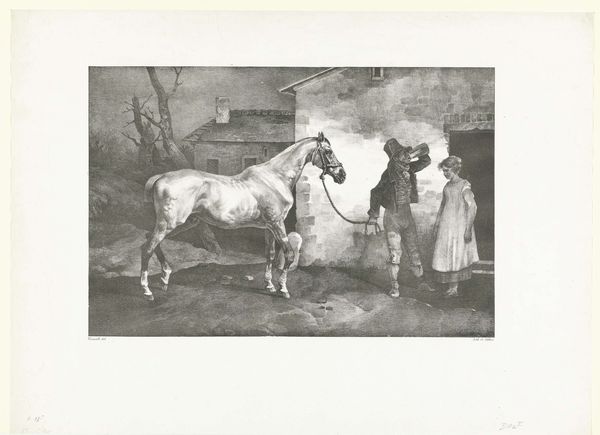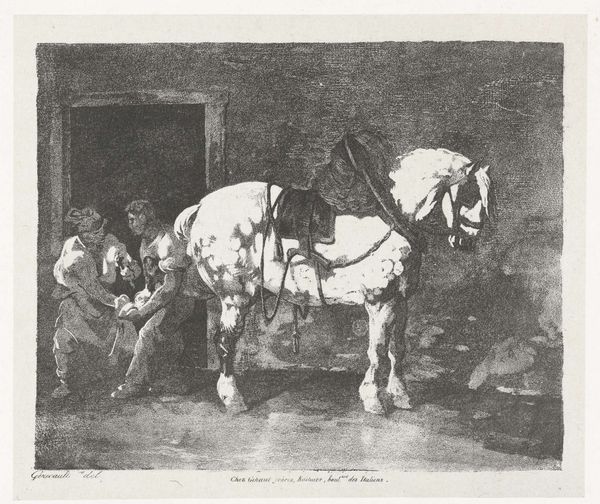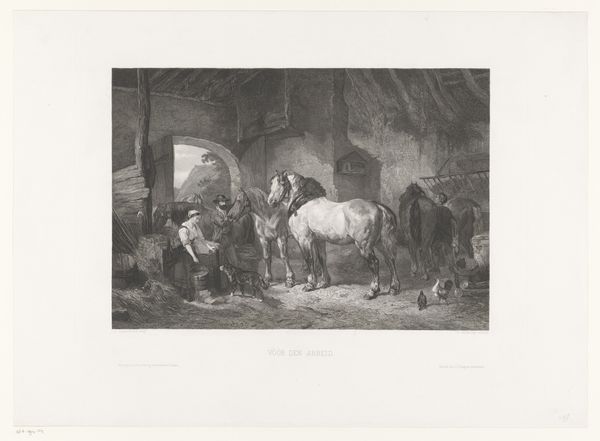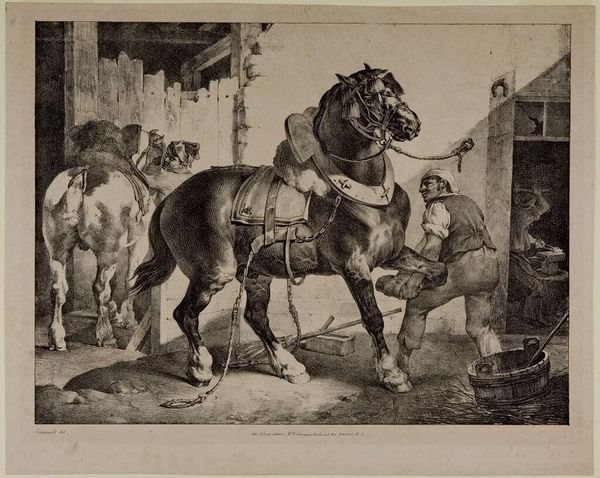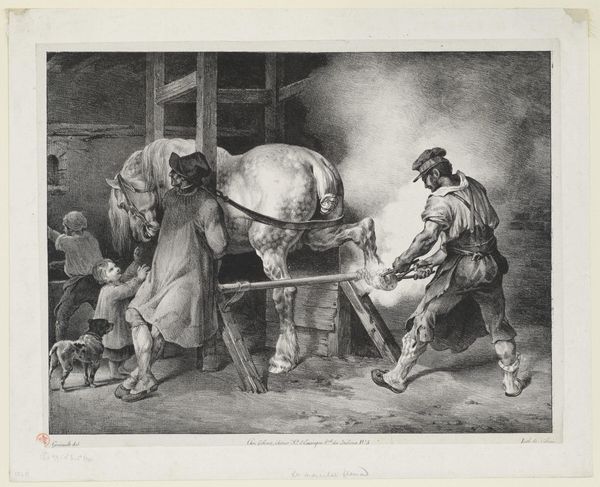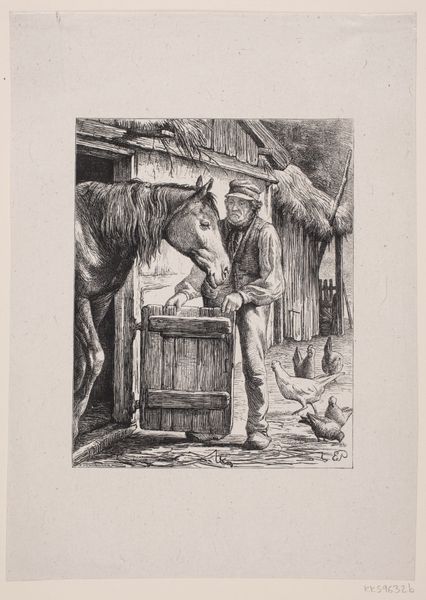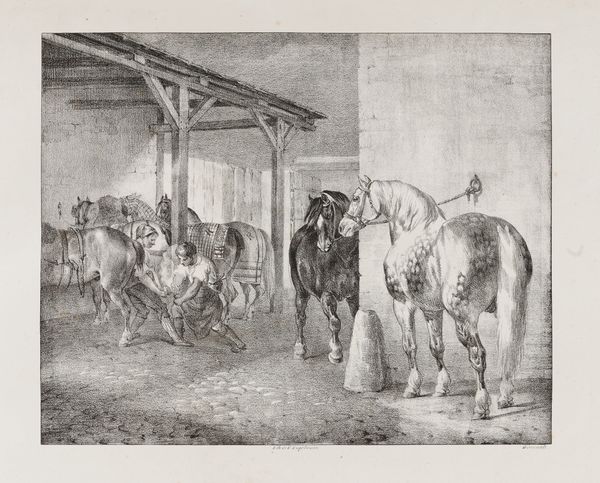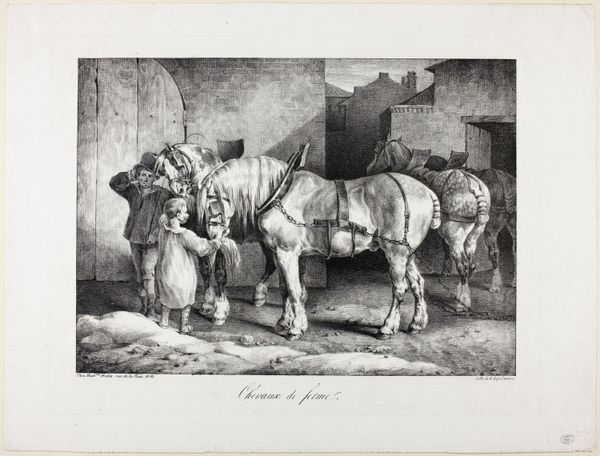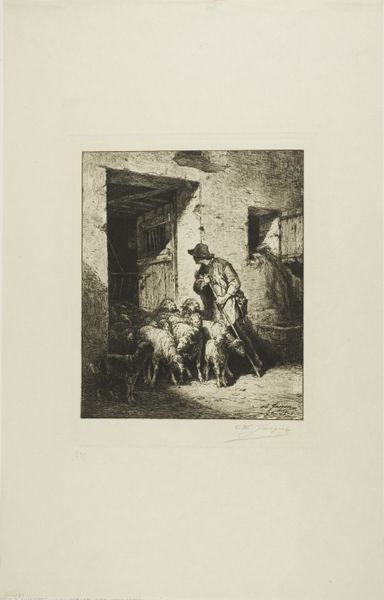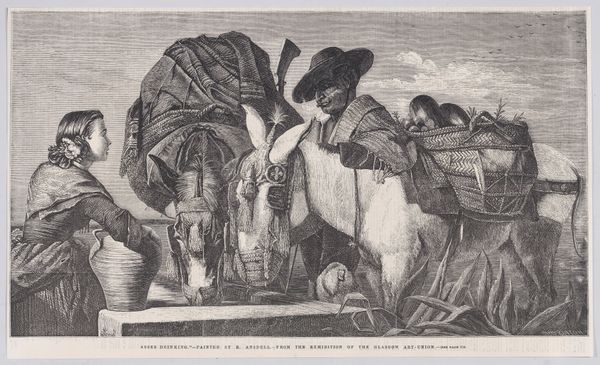
Dimensions: height 270 mm, width 360 mm, height 408 mm, width 516 mm
Copyright: Rijks Museum: Open Domain
Théodore Géricault created this print, "Franse hoefsmid" – or "French Farrier" – using lithography. It captures a moment of everyday labor, but also hints at the shifting social landscape of early 19th-century France. Consider how the image creates meaning through its focus on the working class. Géricault, living in a time of revolution and social change, often depicted ordinary people and the realities of their lives. The print reflects the growing importance of skilled labor in a rapidly industrializing society, a theme he explored repeatedly. The figure of the farrier is presented with dignity, his work essential to the functioning of both rural and urban economies. To understand this print fully, one might delve into archives documenting the economic conditions and social hierarchies of 19th-century France. What was the status of skilled tradesmen? How did the French Revolution impact these social roles? Such research helps us interpret the political and social undercurrents of seemingly simple scenes.
Comments
No comments
Be the first to comment and join the conversation on the ultimate creative platform.

